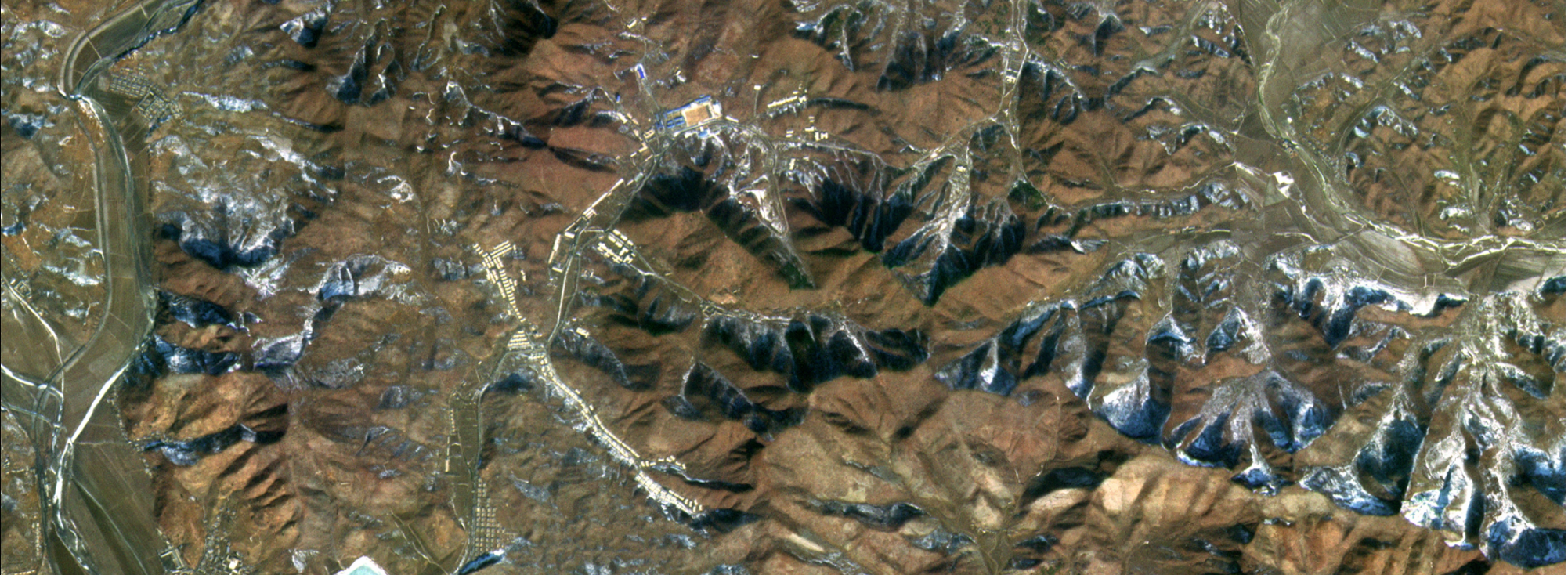
Undeclared North Korea: The Yusang-ni Missile Operating Base (Update since 2019)
Key Findings
- Commercial satellite imagery acquired on January 5, 2021 and February 7, 2021 indicate that the Yusang-ni missile base is operational and that minor development (i.e., construction, etc.) has continued since our last report from May 9, 2019.
- Located 150 kilometers north of the DMZ, the Yusang-ni missile operating base is an operational missile base that appears to house a brigade-size or larger unit—likely with support units. It is one of the more recently constructed Strategic Force missile operating bases.
- Imagery from October 13, 2020 shows approximately 13 truck trailers or shipping containers. Though the reason for the presence of these trailers or shipping containers is unknown, their positions within the facility at the time strongly suggest that they contained equipment or material for use within the underground facility (UGF).
- Imagery also indicates that a driver training course was added sometime between mid-2019 and late-2020. The strategic importance of driver training courses for training the majority of military recruits is especially true for ballistic missile units equipped with very large transporter-erector-launchers, mobile-erector-launchers or transporter-erectors and their associated equipment.
- The unit based at Yusang-ni has been variously reported to be equipped with the Hwasong-13, Hwasong-14 or Hwasong-15 intercontinental ballistic missile (ICBM). However, these reports must be viewed cautiously as operational status of these systems is unknown.
- The base is one of approximately 20 North Korean ballistic missile operating bases and support facilities identified by CSIS analysis and never declared by North Korea.
- Because of the inherent threat posed by North Korean ICBMs carrying nuclear warheads at the Yusang-ni missile operating base and other North Korean ballistic missile bases, it is essential that they be included in any future denuclearization agreements.
Our previous report located the Yusang-ni (유상리) missile operating base (39.449886 126.259682) within North Korea’s operational missile belt in Unsan-gun (Unsan County), Pyongan-namdo (South Pyongan Province), approximately 63 kilometers northeast of Pyongyang. The base is also 150 kilometers north of the demilitarized zone, 220 kilometers northeast of Seoul and 1,225 west-northwest of Tokyo. The Yusang-ni base is sometimes referred to as the Milchon-ni (밀천리) missile operating base for its proximity to the small village of the same name (39.483333 126.233333) approximately 4.5 kilometers to the north-northwest. Reports from 2016 indicate that the unit housed at the base was equipped with a version of the Hwasong-13 (KN-08) intercontinental ballistic missile (ICBM).1 While subsequent reports from 2018 state that the unit was equipped with the Hwasong-14 (KN-20) or Hwasong-15 (KN-22) ICBMs.2

The Yusang-ni missile operating base can be functionally divided into seven broad areas: headquarters and support area (including a small underground facility), large underground facility and support compound, hardened drive-through facility, east barracks and support area, Sang-dong support area, Tapkol housing area, and Kochon housing area. Analysis of commercial satellite imagery acquired on January 5, 2021 and February 7, 2021 indicates that the Yusang-ni missile base is operational and that minor development (i.e., construction, etc.) has continued since our last report on May 9, 2019.
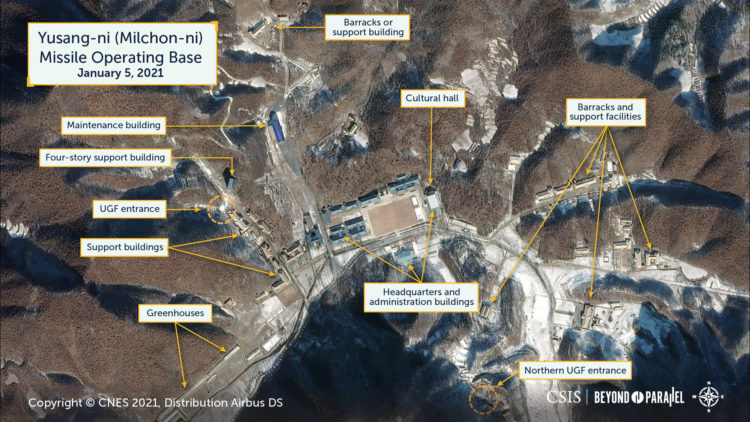
Headquarters and Support Area
Recent imagery shows that minor changes have taken place within the headquarters and support area. Compared to the last report in May 2019, a support building facing the base headquarters and administration area has been completed.
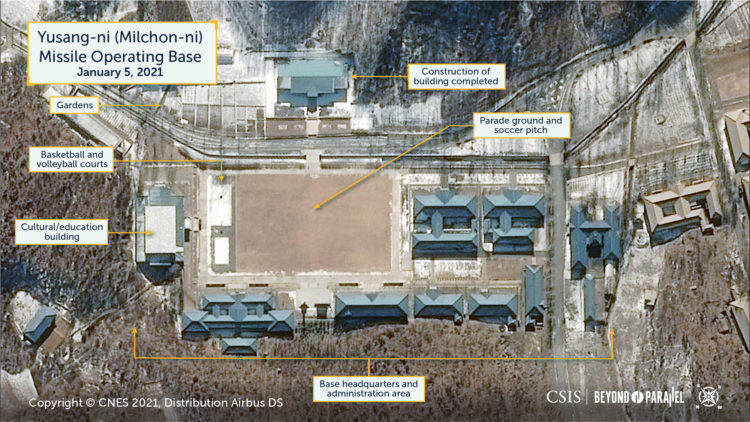
In the support area adjacent to the headquarters, two small buildings have been razed. The razing of these buildings may be an indicator of planned construction in the area, much in the manner that nine buildings were razed to give way to eight larger buildings between 2013 and 2019. No changes are noted to either the four-story barracks/office building or the small UGF entrance in the support area.
A large maintenance-type building has replaced a small group of buildings to the north of the headquarters. Satellite imagery shows that this new maintenance building was completed sometime between October and December of 2020. On the hill above the new building a dirt road has been constructed.
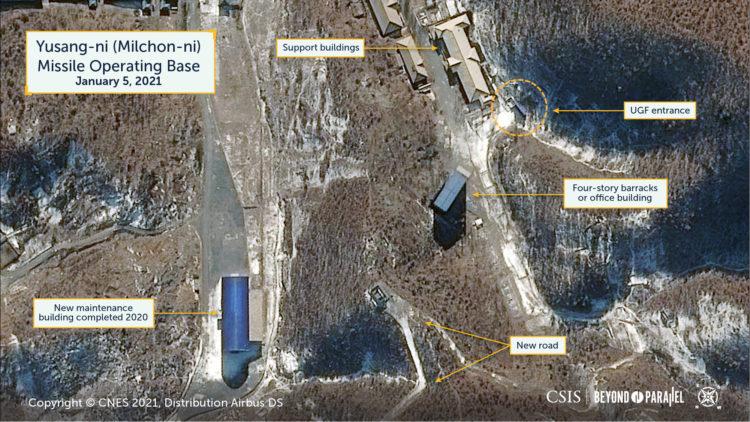
Large Underground Facility
The hill mass south of the headquarters area is the location of the base’s primary UGF. The two entrances for the UGF are located on the north and south slopes of the ridgeline—approximately 400 meters apart. At least three likely air handling shafts have been identified on the ridgeline above the UGF. Such air handling shafts are likely a necessity for what appears to be a large UGF. No significant changes are observed at the UGF entrances or the nearby Sang-dong housing and support area.
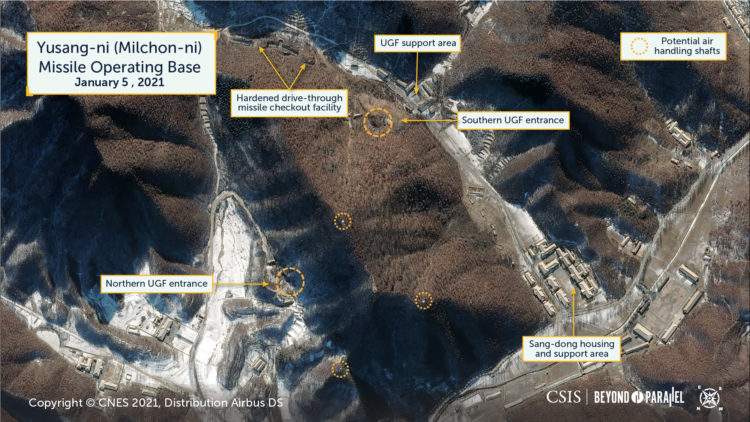
In 2019, two buildings were identified on the access roads that lead to both UGF entrance. The buildings remain in place in January 5, 2021 and are likely for access control.
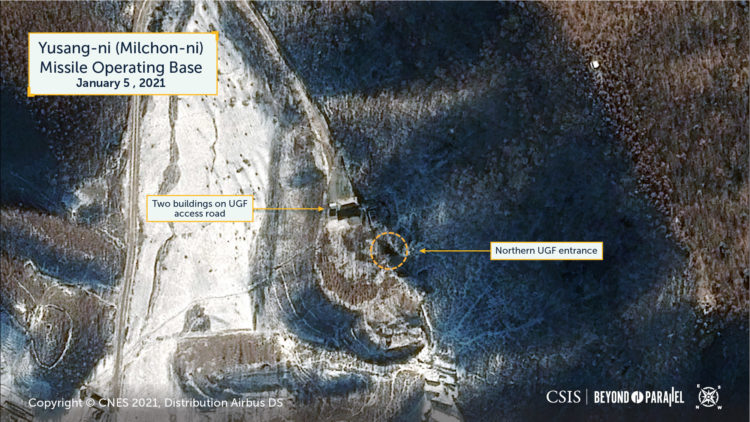
Approximately 100-meters south of the southern UGF entrance is a small UGF support compound consisting of approximately a dozen small structures. Minor changes (e.g., the razing of a small building, completion of another) have been observed here since 2019.
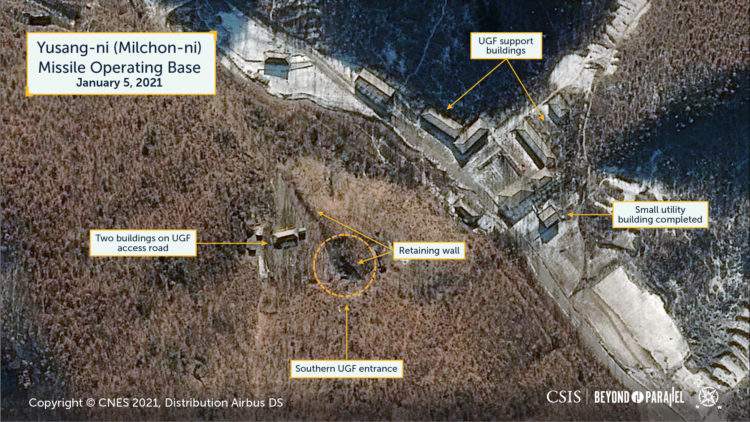
Hardened Drive-Through Missile Support Facility
Located approximately 175-meters east of the UGF support compound and 200-meters southeast of the southern UGF entrance is the hardened drive-through missile support facility. While no changes are noted at the drive-through facility, satellite imagery from October 13, 2020 shows that the road intersection, roughly equidistance between it, the southern UGF entrance and the UGF support compound contained approximately 13 truck trailers or shipping containers. The reason for the presence of these trailers or shipping containers is unknown. However, the fact that they are up a dead-end valley and adjacent to the southern UGF entrance and UGF support compound strongly suggests that they contained equipment or material for use within the UGF.
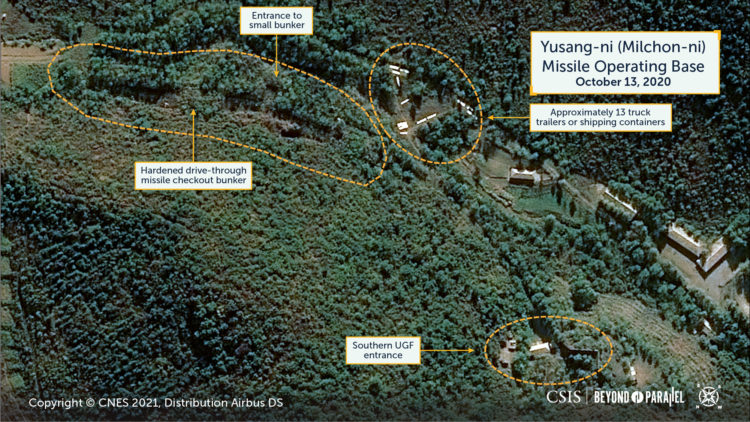
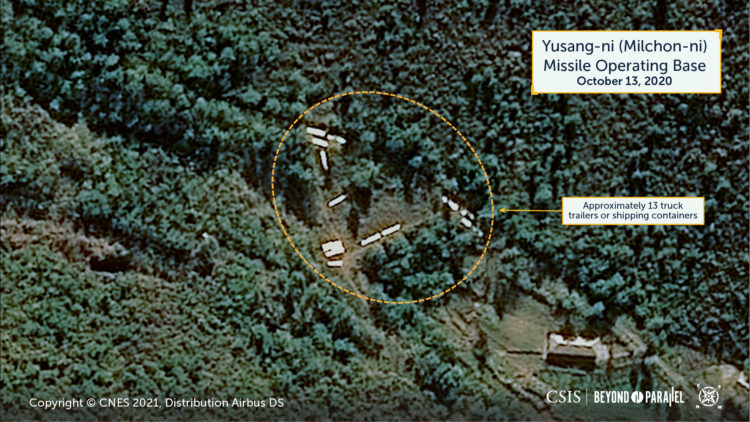
The truck trailers or shipping containers were no longer present in imagery acquired on January 5, 2021.
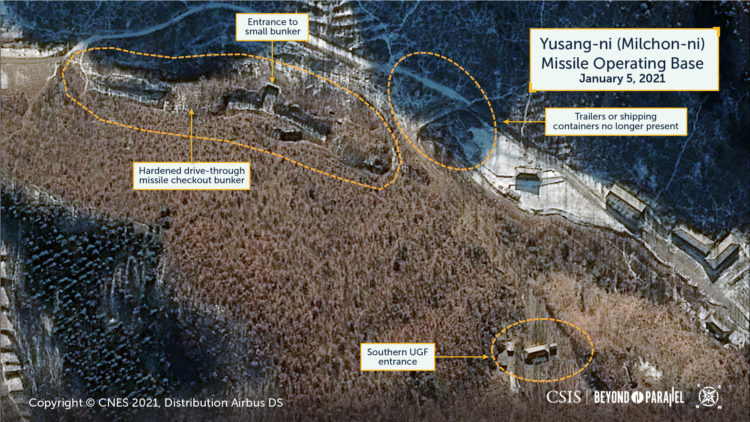
East Barracks and Support Area
The barracks and support area on the east side of the base shows several minor developments since the 2019 report. At least nine small support buildings located throughout the area have been razed and a driver training course has been added. Satellite imagery shows that the course was created sometime between mid-2019 and late-2020. Driver training courses are important to North Korean military units as the vast percentage of recruits have no experience driving vehicles. This is especially true for ballistic missile units equipped with very large transporter-erector-launchers, mobile-erector-launchers or transporter-erectors and their associated equipment.
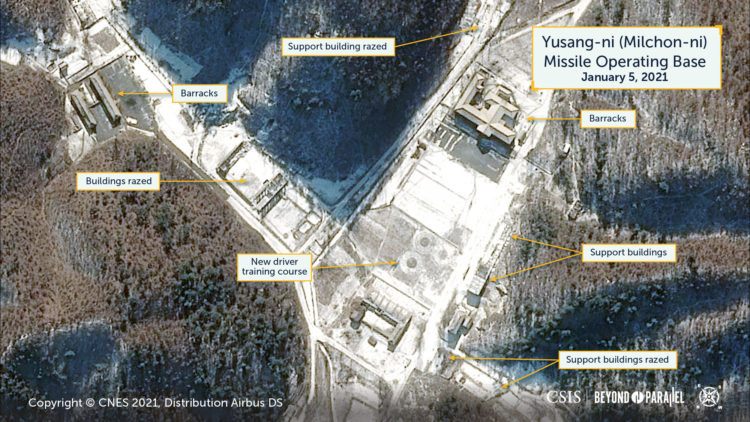
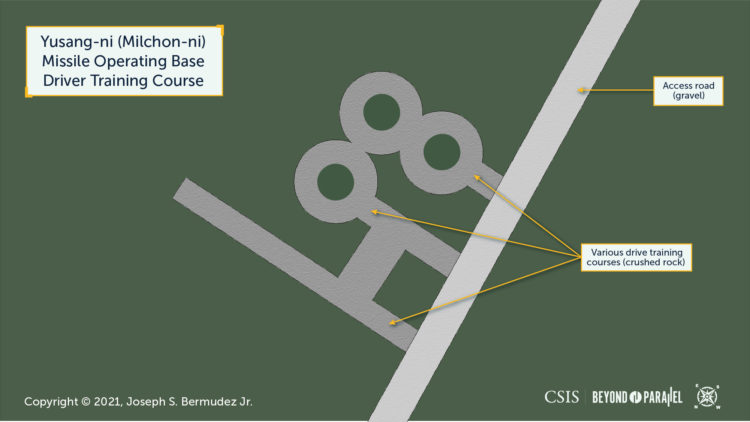
Elsewhere Around the Facility
Located approximately 1,100 meters north of the headquarters area is a road tunnel that began construction during 2013 and was generally completed by early 2018. Such a road tunnel is likely required to easily move large vehicles (i.e., missile transporter-erector-launchers, transporter-erectors, etc.) to the north out of the base. While major construction of this road tunnel appears to be finished by early 2018, the January 5, 2021 image shows that there has been no significant improvement of the road through it. There is some speculation that the road tunnel could also serve as an entrance to another large UGF. At present, this does not appear to be likely.
Additionally, located immediately outside the southern entrance to the tunnel is what appears to be a large excavation and partial foundation has been left unfinished since 2019.
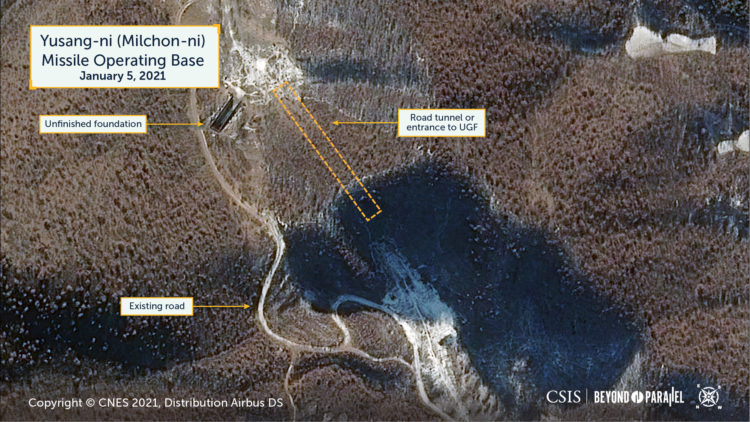
The housing and support areas at Sang-dong, Tapkol, and Kochon have remained relatively unchanged since May 2019.
References
- Author interview data; and Ahn Hyung-young. “North Korea is operating ICBM sites within four places such as Unpo-ri… ‘KN-08 already has been deployed’,” Chosun TV, October 24, 2016. ↩
- Ibid.; Jeon Kyoung-woong. “Let’s Pick Apart North Korean Tactics and Military Strength…North Korea’s Military,” FutureKorea, November 15, 2018. These reports should be viewed cautiously as the development and production status of these systems is unknown. ↩
